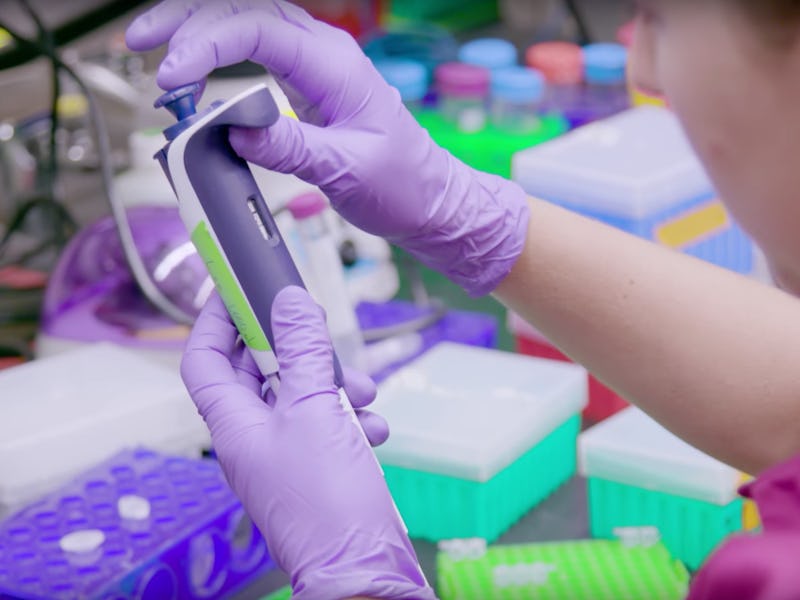Microsoft Wants to Store the Entire Internet on a DNA Strand
The company encoded a record breaking 200 megabytes of data onto DNA.

Whether it’s books, cassettes, CDs, DVDs, or the cloud, technology has always advanced faster than we can convert the old media to the newest medium. However, there is one place where information has remained pristine for thousands of years: our DNA.
“As long as there is DNA-based life on the planet, we’ll be interested in reading it,” says Karin Strauss, a researcher with Microsoft, noting that woolly mammoth DNA was discovered several thousand years after extinction.
“It’s eternally relevant,” she says.
Today, Microsoft in collaboration with the University of Washington announced it has stored a record-breaking 200 megabytes of data onto a single strand of molecular DNA.
The media inside includes the Universal Declaration of Human Rights translated in more than 100 languages, the top 100 classic books from the free e-book site Project Gutenberg, a seed database from the nonprofit Crop Trust, and, oddly enough, the band OK Go’s Rube Goldberg-inspired music video for “This Too Shall Pass.”
There are a couple of advantages to storing data this way. It’s durable with what Microsoft claims is a half-life of 500 years. And, it’s dense, with the capability of fitting all the information in one of Google’s more than 68,000 square-foot data centers into something the size of a sugar cube. Or, in other words, the company says it could fit all the information that currently exists on the internet into a device the size of a shoe box. That’s far better than what the guys on Silicon Valley proposed in the latest season.
Microsoft isn’t there yet, but this does represent a milestone. It builds on previous efforts such as a Harvard researcher encoding a 50,000-word book onto DNA back in 2012 totaling less than 1 megabyte, and that same researcher this year increasing the threshold to 22 megabytes. In 2013, the European Bioinformatics Institute also copied 739 kilobytes of data into DNA, including Martin Luther King Jr.’s “I Have A Dream” speech.
Today’s announcement is a marked increase of about 10 times those best efforts and shows that a future with DNA storage isn’t so impossible. The team has even said it’s going to start using computer science principles such as error correction that will speed up development even more.
Yet, price remains a large barrier, and the team has a long way before this can be a viable archival tool, says Luis Henrique Ceze, the principal researcher from the University of Washington on the project. Ultimately, the technology needs to be as cheap or cheaper than the current standard of storing data on tape, and that’s a high bar to vault, according to Reinhard Heckel, DNA storage researcher at University of California, Berkeley.
Digital data from more than 600 basic smartphones can be stored in the faint pink smear of DNA at the end of this test tube.
DNA already holds all the biological information for all living development, functioning, and reproduction, so why not add some OK Go music videos to the mix?
“DNA is an amazing information storage molecule that encodes data about how a living system works. We’re repurposing that capacity to store digital data — pictures, videos, documents,” said Ceze. “This is one important example of the potential of borrowing from nature to build better computer systems.”